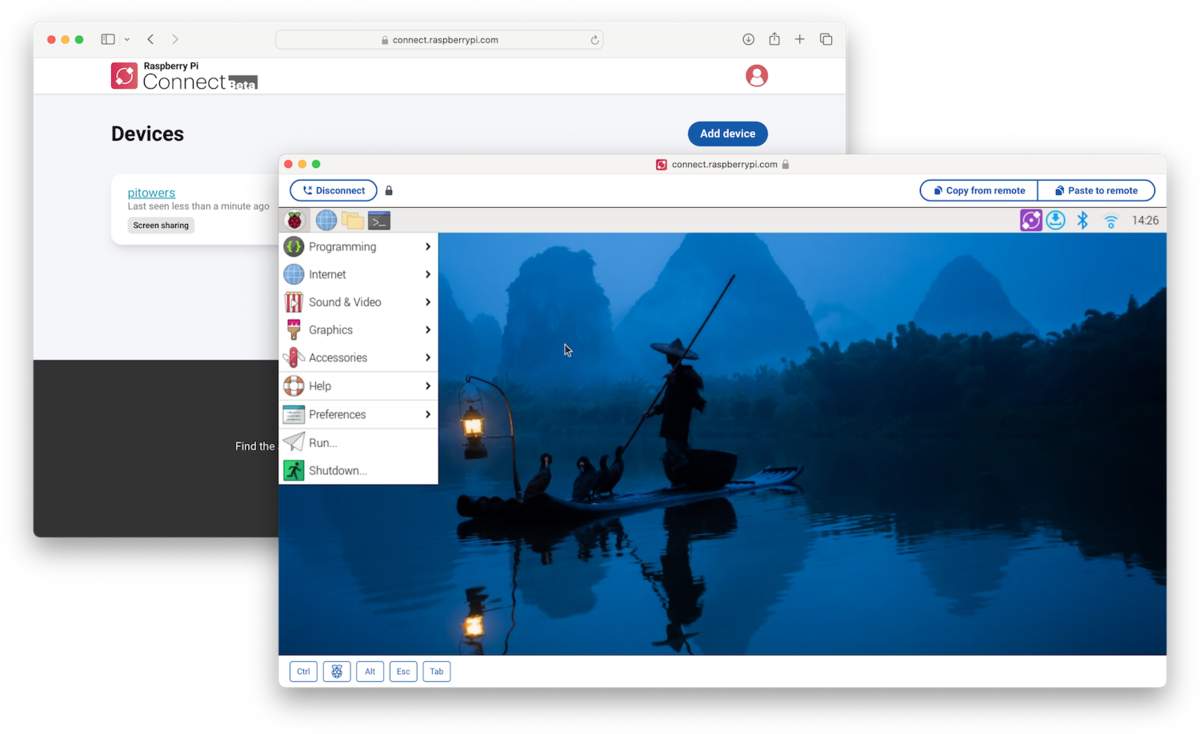Mastering RemoteIoT With Raspberry Pi: A Comprehensive Guide
RemoteIoT technology has revolutionized the way we interact with devices across vast distances, and Raspberry Pi plays a pivotal role in this transformation. In this digital age, connecting devices remotely is not just a luxury but a necessity. Whether you're a tech enthusiast, a hobbyist, or a professional, understanding how RemoteIoT works with Raspberry Pi can open doors to endless possibilities.
Raspberry Pi, a small yet powerful single-board computer, has become the go-to device for developers and enthusiasts alike. Its affordability, flexibility, and ease of use make it an ideal platform for implementing RemoteIoT solutions. From home automation to industrial applications, Raspberry Pi serves as the backbone of many IoT projects.
In this article, we will delve deep into the world of RemoteIoT with Raspberry Pi, exploring its applications, setup processes, troubleshooting tips, and much more. Whether you're new to IoT or an experienced developer, this guide will equip you with the knowledge and tools needed to harness the full potential of RemoteIoT using Raspberry Pi.
Table of Contents
- Introduction to RemoteIoT and Raspberry Pi
- Overview of Raspberry Pi
- Basics of RemoteIoT
- Setting Up RemoteIoT with Raspberry Pi
- Applications of RemoteIoT with Raspberry Pi
- Security Considerations
- Troubleshooting Common Issues
- Optimizing RemoteIoT Performance
- Future Trends in RemoteIoT
- Conclusion
Introduction to RemoteIoT and Raspberry Pi
RemoteIoT refers to the ability to control and monitor devices remotely using the Internet of Things (IoT) technology. This concept has gained significant traction in recent years, thanks to advancements in wireless communication, cloud computing, and edge computing. Raspberry Pi, with its versatile capabilities, serves as an excellent platform for implementing RemoteIoT solutions.
Why Choose Raspberry Pi for RemoteIoT?
Raspberry Pi offers several advantages that make it a preferred choice for RemoteIoT projects:
- Cost-effective hardware
- Wide range of compatible sensors and modules
- Open-source software ecosystem
- Strong community support
Overview of Raspberry Pi
Raspberry Pi is a series of single-board computers developed by the Raspberry Pi Foundation. It was initially designed to promote computer science education but has since evolved into a versatile platform for various applications, including RemoteIoT.
Key Features of Raspberry Pi
- Processor: Broadcom BCM2835 or later
- Memory: 1GB to 8GB RAM (depending on the model)
- Connectivity: Wi-Fi, Bluetooth, Ethernet
- Ports: USB, HDMI, GPIO
Basics of RemoteIoT
RemoteIoT involves connecting devices to a network and controlling them from a remote location. This technology relies on sensors, actuators, and communication protocols to enable seamless interaction between devices.
Components of RemoteIoT
- Sensors: For data collection
- Actuators: For device control
- Communication Protocols: MQTT, HTTP, CoAP
Setting Up RemoteIoT with Raspberry Pi
Setting up RemoteIoT with Raspberry Pi involves several steps, including hardware preparation, software installation, and network configuration.
Hardware Requirements
- Raspberry Pi board
- Power supply
- Sensors and actuators
Software Installation
Begin by installing the Raspberry Pi OS on your device. Once installed, configure the network settings and install necessary libraries for RemoteIoT communication.
Applications of RemoteIoT with Raspberry Pi
RemoteIoT with Raspberry Pi finds applications in various domains:
Home Automation
Control lighting, temperature, and security systems from anywhere in the world.
Industrial IoT
Monitor and manage industrial equipment remotely for improved efficiency and safety.
Agriculture
Implement smart farming techniques using RemoteIoT to optimize resource usage and increase yield.
Security Considerations
Security is a critical aspect of RemoteIoT. Protecting your devices and data from unauthorized access is essential.
Best Practices
- Use strong passwords
- Enable encryption for communication
- Regularly update software
Troubleshooting Common Issues
Encountering issues during setup or operation is common. Here are some troubleshooting tips:
Connection Problems
Ensure that your Raspberry Pi is properly connected to the network and that all necessary drivers are installed.
Optimizing RemoteIoT Performance
To get the best performance from your RemoteIoT setup, consider the following:
Hardware Optimization
Use high-quality components and ensure proper cooling for your Raspberry Pi.
Software Optimization
Optimize your code for efficiency and use lightweight libraries where possible.
Future Trends in RemoteIoT
The future of RemoteIoT looks promising, with emerging technologies like 5G and AI set to enhance its capabilities further.
Predictions
- Increased adoption of edge computing
- Integration with AI and machine learning
- Enhanced security measures
Conclusion
RemoteIoT with Raspberry Pi offers endless possibilities for innovation and development. By understanding its basics, setting it up correctly, and following best practices, you can create robust and secure IoT solutions. We encourage you to share your experiences and insights in the comments section below. Don't forget to explore other articles on our website for more exciting content!
Data Sources:



Detail Author:
- Name : Matilde Lubowitz
- Email : crist.kyla@yahoo.com
- Birthdate : 1982-06-21
- Address : 937 Jacklyn Parkways South Deloresborough, MT 73354-9872
- Phone : +1-401-392-5416
- Company : Sanford, Streich and Buckridge
- Job : Mechanical Door Repairer
- Bio : Pariatur est facilis et rerum. Soluta quibusdam ut numquam adipisci. Non cum rem et. Labore quia molestias dolores perferendis ipsum et autem.